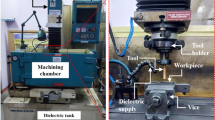Abstract
For the disposal of a high efficiency particulate air (HEPA) glass filter into the environment, the glass fiber should be leached to lower its radioactive concentration to the clearance level. To derive an optimum method for the removal of uranium series from a HEPA glass fiber, five methods were applied in this study. That is, chemical leaching by a 4.0 M HNO3–0.1 M Ce(IV) solution, chemical leaching by a 5 wt% NaOH solution, chemical leaching by a 0.5 M H2O2–1.0 M Na2CO3 solution, chemical consecutive chemical leaching by a 4.0 M HNO3 solution, and repeated chemical leaching by a 4.0 M HNO3 solution were used to remove the uranium series. The residual radioactivity concentrations of 238U, 235U, 226Ra, and 234Th in glass after leaching for 5 h by the 4.0 M HNO3–0.1 M Ce(IV) solution were 2.1, 0.3, 1.1, and 1.2 Bq/g. The residual radioactivity concentrations of 238U, 235U, 226Ra, and 234Th in glass after leaching for 36 h by 4.0 M HNO3–0.1 M Ce(IV) solution were 76.9, 3.4, 63.7, and 71.9 Bq/g. The residual radioactivity concentrations of 238U, 235U, 226Ra, and 234Th in glass after leaching for 8 h by a 0.5 M H2O2–1.0 M Na2CO3 solution were 8.9, 0.0, 1.91, and 6.4 Bq/g. The residual radioactivity concentrations of 238U, 235U, 226Ra, and 234Th in glass after consecutive leaching for 8 h by the 4.0 M HNO3 solution were 2.08, 0.12, 1.55, and 2.0 Bq/g. The residual radioactivity concentrations of 238U, 235U, 226Ra, and 234Th in glass after three repetitions of leaching for 3 h by the 4.0 M HNO3 solution were 0.02, 0.02, 0.29, and 0.26 Bq/g. Meanwhile, the removal efficiencies of 238U, 235U, 226Ra, and 234Th from the waste solution after its precipitation–filtration treatment with NaOH and alum for reuse of the 4.0 M HNO3 waste solution were 100, 100, 93.3, and 100%.










Similar content being viewed by others
References
Chun YB (2007) Operation of nuclear fuel cycle examination facilities. Korea Atomic Energy Research Institute, Dajeon. http://www.kornis21.kaeri.re.kr. Accessed 1 Jan 2007
Leuze RE, Bond WD, Scheitlin FM (1980) Recovery of plutonium from HEPA filters by Ce(IV)-promoted dissolution of PuO2 and recycle of the cerium promoter. Oak Ridge National Laboratory, Oak Ridge, Tennessee. http://www.osti.gov. Accessed 22 July 1980
Qureshi ZH, Strege DK (1994) Pilot-scale tests of HEME and HEPA dissolution process. Westinghouse Savannah River Company, Savannah River Technology Center, Aiken. http://www.osti.gov. Accessed June 1994
Meikrantz DH, Bourne GL, McFee JN, Mex AN, Burdge BG, McConnell JW (1990) Method of recovering hazardous waste from phenolic resin filters. United States Patent 4995916, U.S. Department of Energy, Washington, DC
Argyle MD, Demmer RL, Archibald KE, Brewer KN, Pierson KA, Shackelford KR, Kline KS (1999) INEEL HEPA filter leach system: a mixed waste solution. Idaho National Engineering and Environmental Laboratory, Idaho falls. http://www.wmsym.org. Accessed 28 Feb 1999
Donovan RI, O’Brien BH (1984) NWCF HEPA filter leaching demonstration results. Westinghouse Idaho Nuclear Company, Idaho Falls
McCray CW, Brewer KN (1992) HEPA filter leach system technical basis report, WINCO-1096. Westinghouse Idaho Nuclear Company, Idaho Falls
Chakavartty AC (1995) HEPA filter leaching concept validation trials at the Idaho chemical processing plant. Idaho national engineering laboratory, Idaho Falls. http://www.osti.gov. Accessed April 1995
Kim G, Shon D, Park H, Choi W, Lee K (2011) The development of precipitation-filtering technology for uranium electrokinetic leachate. Sep Purif Technol 79:144–150
Gu B, Brooks SC, Roh Y, Jardine PM (2003) Geochemical reactions and dynamics during titration of a contaminated groundwater with high uranium, aluminum, and calcium. Geochim Cosmochim Acta 67:2749–2761
Luo W, Kelly SD, Kemner KM, Watson D, Zhou J, Jardine PM, Gu B (2009) Sequestering uranium and technetium through co-precipitation with aluminum in a contaminated acidic environment. Environ Sci Technol 43:7516–7522
Istok JD, Senko JM, Krumholz LR, Watson D, Bogle MA, Peacock A, Chang YJ, White DC (2004) In situ bioreduction of technetium and uranium in a nitrate contaminated aquifer. Environ Sci Technol 38:468–475
Couston L, Pouyat D, Mpulin C, Decambox P (1995) Speciation of uranyl species in nitric acid medium by time-resolved laser-induced fluorescence. Appl Spectrosc 49:349–353
Zhou P, Gu B (2005) Extraction of oxidized and reduced forms of uranium from contaminated soils: the effects of carbonate concentration and pH. Environ Sci Technol 39:4435–4440
Bhattacharya PK, Saini RD, Ruikar PB (1982) Reaction between uranium(VI) and hydrogen peroxide in hydrochloric acid medium. Int J Chem Kinet 14:1219
McFarlane L, Rollwagen D (1982) Hydrogen peroxide precipitation of uranium at Madawaha Mines. In: Proceedings Canadian Mineral Processors, Ottawa, Jan, Paper No. 8, pp 19–21
Chung D, Seo H, Lee J, Yang H, Lee E, Kim K (2010) Oxidative leaching of uranium from SIMFUEL using Na2CO3–H2O2 solution. J Radioanal Nucl Chem 284:123–129
Dewberry RA, Casella VR, Sigg RA, Salaymeh SR, Moore FS, Pak DJ (2008) Holdup measurements for three visual examination and TRU remediation glovebox facilities at the Savannah River Site. J Radioanal Nucl Chem 275:541–554
Sas D, Sladek P, Janda J (2010) Measuring alpha and beta activity of filter and swab samples with LSC. J Radioanal Nucl Chem 286:513–517
Yasuoka Y, Ishikawa T, Tokonami S, Takahashi H, Sorimachi A, Shingi M (2009) Radon mitigation using an air cleaner. J Radioanal Nucl Chem 279: 885–891
Kim G, Lee S, Shon D, Park H, Choi W, Moon J (2011) Development of a method for nuclide leaching from glass fiber in HEPA filter. J Radioanal Nucl Chem 289:121–128
IAEA, Application of the conceptions of exclusion, exemption and clearance, Safety Guide, No. RS-G-1.7
Acknowledgment
This work was supported by the Nuclear Research & Development Program of the Korea Science and Engineering Foundation (KOSEF) funded by the South Korean government (MEST).
Author information
Authors and Affiliations
Corresponding author
Rights and permissions
About this article
Cite this article
Kim, GN., Park, HM., Choi, WK. et al. A device for uranium series leaching from glass fiber in HEPA filter. J Radioanal Nucl Chem 293, 157–166 (2012). https://doi.org/10.1007/s10967-012-1628-y
Received:
Published:
Issue Date:
DOI: https://doi.org/10.1007/s10967-012-1628-y




